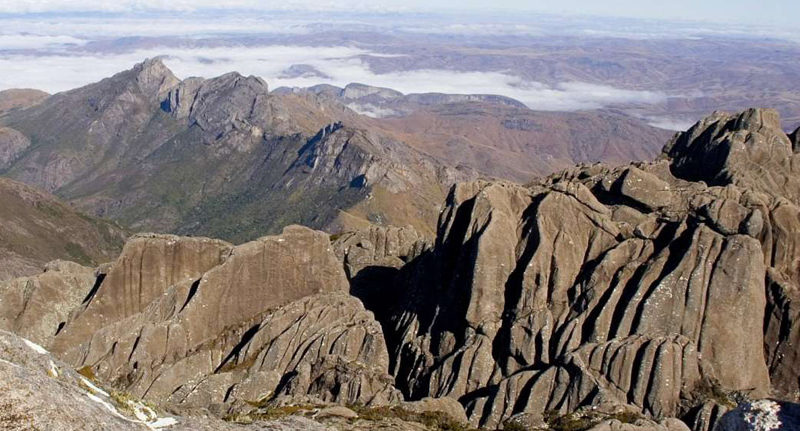Andringitra National Park: Madagascar’s Hidden Treasure for Nature Lovers
Nestled in the heart of Madagascar, Andringitra National Park is a spectacular natural wonder. With its dramatic mountain ranges, cascading waterfalls, and remarkable biodiversity, this park stands as one of the island’s most breathtaking destinations. Whether you’re a hiker, wildlife enthusiast, or curious traveler, exploring this park offers an unforgettable experience.
1. Discovering the Unique Landscape of Andringitra National Park
Andringitra National Park spans over 31,000 hectares, covering rugged terrain, deep valleys, and granite massifs. Unlike many other parts of Madagascar, the park features high-altitude ecosystems, making it a paradise for adventurers.
Moreover, the park is home to Pic Boby (also known as Imarivolanitra), the second-highest peak in Madagascar at 2,658 meters. Climbing this peak provides panoramic views of vast grasslands and cloud forests. Consequently, Andringitra has earned a reputation as one of the country’s top trekking destinations.
In addition to its mountains, the park includes lush rainforests, savannas, and rocky plateaus. This remarkable diversity creates a unique mix of habitats that sustain a wide variety of plant and animal species.
2. Biodiversity That Makes Andringitra National Park Exceptional
One of the most compelling reasons to visit Andringitra National Park is its incredible biodiversity. Over 100 species of birds, 50 species of mammals, and 55 species of frogs thrive within its borders.
For example, lemurs such as the ring-tailed lemur, the red-fronted brown lemur, and the cathemeral lemur can all be spotted during hikes. Many of these species are endemic to Madagascar, which means they can’t be found anywhere else on Earth.
In addition, the park shelters rare orchids and medicinal plants that contribute to its ecological importance. Because of these features, Andringitra has been designated a UNESCO Biosphere Reserve.
3. The Cultural Heritage of Andringitra National Park
Beyond its natural beauty, Andringitra National Park holds deep cultural significance. Local Betsileo and Bara communities have lived around the park for centuries, maintaining traditions that are closely tied to the land.
Many sacred sites are scattered across the park, including ceremonial caves and rock formations used for ancestral rituals. Visitors are encouraged to respect these areas, as they remain integral to local spiritual practices.
Furthermore, interacting with these communities offers a richer travel experience. Guided village tours allow travelers to learn about traditional farming techniques, music, and storytelling. Therefore, visiting Andringitra is not only an ecological adventure but also a cultural journey.
4. Best Time to Visit Andringitra National Park
Timing your trip well is essential for making the most of your visit to Andringitra National Park.
The dry season, from April to November, is generally considered the best time for trekking. During this period, trails are more accessible, and the weather is cool and pleasant. As a result, hikers can enjoy uninterrupted panoramic views from the summits.
On the other hand, the rainy season (December to March) can make some paths slippery and challenging. However, this season brings lush vegetation and fuller waterfalls, which photographers often love capturing. Consequently, each season offers distinct advantages depending on your travel style.
5. Top Hiking Trails in Andringitra National Park
Hiking is the highlight of any trip to Andringitra National Park, and the park offers a variety of well-marked trails for all levels.
5.1 The Asaramanitra Trail
This is a short and accessible trail that leads to the breathtaking Riandahy and Riambavy waterfalls. In addition to being a great introduction to the park’s scenery, this route is ideal for families or travelers with limited time.
5.2 The Diavolana Circuit
Known as the “moonlight trail,” this path traverses a surreal landscape of granite outcrops and sparse vegetation. The name comes from the way the rocks glow under moonlight, creating a magical atmosphere. Moreover, this hike offers excellent opportunities to spot unique bird species and endemic flora.
5.3 The Imarivolanitra Ascent
For seasoned hikers, climbing Pic Boby is a must. The ascent typically takes two days, with an overnight camp on the plateau. Although challenging, the reward is spectacular: a sweeping 360-degree view of Madagascar’s highlands. In addition, local guides often share fascinating legends about the peak, making the journey even more enriching.
6. How to Get to Andringitra National Park
Reaching Andringitra National Park involves a bit of planning, but the journey is part of the adventure.
The nearest major town is Ambalavao, located about 47 km north of the park. From there, travelers typically take a 4×4 vehicle to reach the entrance. The road can be rough, especially after rain, so hiring a local driver is highly recommended.
Alternatively, you can book a guided tour that includes transportation, accommodation, and park fees. This option simplifies logistics and allows you to focus entirely on the experience.
7. Accommodation Options Near Andringitra National Park
Accommodation near Andringitra National Park ranges from basic campsites to eco-lodges that offer more comfort.
7.1 Camping
Camping is the most immersive way to experience the park. Designated sites are available along major trails, allowing you to sleep under the stars surrounded by nature’s sounds. Moreover, camping provides easy access to early morning hikes, which often feature incredible light and wildlife activity.
7.2 Lodges and Guesthouses
For those seeking a bit more comfort, eco-lodges and guesthouses are located in nearby villages such as Namoly and Ambalavao. Many of these lodges offer warm hospitality, traditional Malagasy meals, and guided excursions. Consequently, they provide a perfect balance between comfort and authenticity.
8. Practical Tips for Visiting Andringitra National Park
To make your trip to Andringitra National Park smooth and memorable, consider the following tips:
-
Hire a local guide: Guides not only ensure your safety but also enrich the journey with cultural and ecological insights.
-
Pack appropriately: Bring sturdy hiking boots, warm clothes for cool nights, and rain gear if visiting during the wet season.
-
Respect local customs: Avoid entering sacred sites without permission and follow community guidelines.
-
Stay hydrated and eco-friendly: Carry reusable bottles and minimize plastic waste.
Moreover, planning ahead and booking accommodation early during peak season ensures a more comfortable trip. As a result, you can focus entirely on the beauty of the park without worrying about logistics.
9. Why Andringitra National Park Should Be on Your Madagascar Itinerary
Madagascar is full of incredible destinations, but Andringitra National Park stands out as a place where nature and culture meet harmoniously.
Its towering peaks, rich biodiversity, and vibrant local traditions offer something for every traveler. Whether you’re trekking through moonlit valleys, spotting lemurs in the forest, or sharing a meal with a local family, the park leaves a lasting impression.
In addition, visiting the park supports local communities and contributes to conservation efforts. Consequently, your trip has a positive impact on both people and the environment.
Final Thoughts
Andringitra National Park is more than just a destination — it’s an experience that connects you to Madagascar’s heart and soul. With its unique landscapes, abundant wildlife, and cultural depth, the park offers an adventure unlike any other.
So, if you’re planning a trip to Madagascar, make sure this hidden treasure is on your list. In doing so, you’ll embark on a journey that blends adventure, culture, and nature in the most unforgettable way.

